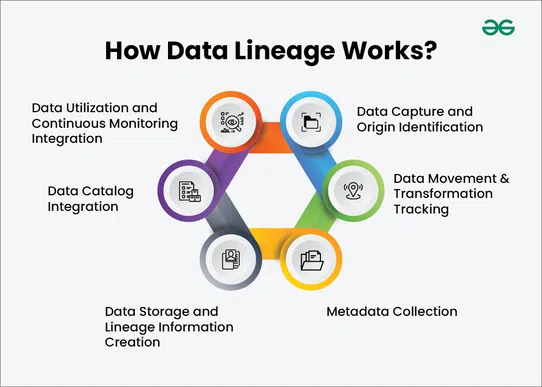In the vast ocean of enterprise data, metadata acts as the lighthouse — guiding organisations through waves of information, ensuring that everyone from analysts to executives understands what the data represents, where it originates, and how it should be used. Metadata management systems are the unsung heroes of modern analytics — they provide order, transparency, and governance in an age where data drives every decision.
The Story Behind Metadata: Giving Data Its Meaning
Imagine a massive library where every book has no title, author, or genre listed. Finding the right book would be chaos. Metadata is the label that brings order to such a library — defining what the data is, where it came from, and how it should be interpreted.
In organisations, metadata helps break down silos. It documents not just the technical details of data — such as schema or source — but also its business meaning. A sales “revenue” field might mean gross income for one department and net earnings for another. Metadata management ensures these definitions are aligned, preventing misinterpretations that can lead to flawed analysis or misguided strategies.
For professionals aspiring to understand how businesses manage such intricate systems, enrolling in a business analyst course in Pune offers a foundational perspective on how metadata governance shapes decision-making processes.
The Pillars of Effective Metadata Management
A robust metadata management system stands on three strong pillars: lineage, definitions, and business context.
Data lineage is like a map tracing how information flows through an organisation — from its origin to the dashboards and reports that executives use. It allows stakeholders to verify data accuracy and trace back errors to their source.
Data definitions establish a shared vocabulary. When everyone agrees on what “customer churn” or “active user” means, collaboration becomes smoother.
Business context connects technical metadata with its strategic implications. It bridges the gap between IT teams who store and process data and business teams who interpret and act on it.
Together, these pillars form the foundation of trustworthy analytics and enable consistency across projects and departments.
Tools and Technologies Powering Metadata Systems
Modern metadata management is no longer a manual documentation effort — it’s automated, intelligent, and integrated. Platforms like Apache Atlas, Alation, Collibra, and Informatica enable organisations to discover, catalogue, and visualise metadata across diverse data sources.
These tools often come equipped with machine learning capabilities that automatically tag datasets, detect anomalies, and recommend data relationships. The use of APIs allows integration with business intelligence platforms, data lakes, and ETL pipelines, ensuring real-time visibility of data flows.
Analysts equipped with the right training, such as a business analyst course in Pune, learn how to interpret these metadata tools to connect technical metadata to meaningful business narratives — a skill highly valued in data-driven industries.
The Role of Metadata in Governance and Compliance
As organisations face tighter regulations like GDPR and HIPAA, metadata management has become central to compliance. Knowing where sensitive data resides, who accessed it, and how it is transformed is not optional — it’s essential.
Metadata provides the audit trail that regulators require. It helps companies enforce policies, maintain transparency, and ensure accountability. Documenting data ownership and access builds trust among both internal users and external stakeholders.
Moreover, metadata management fosters data democracy. When data consumers can easily find and understand information, it empowers self-service analytics — freeing IT teams from repetitive requests and encouraging innovation across departments.
Future of Metadata: From Documentation to Intelligence
The next evolution of metadata management goes beyond cataloguing. It’s shifting toward active metadata — systems that not only describe data but also monitor, learn, and adapt.
Active metadata systems can detect when a dataset becomes outdated, suggest related data assets, or automatically flag inconsistencies. As artificial intelligence continues to mature, metadata management will increasingly become predictive — guiding users toward the most relevant data for their objectives.
Metadata will evolve from being a passive librarian to an intelligent assistant that understands business needs and enhances data-driven decision-making.
Conclusion
Metadata management systems are the backbone of modern analytics ecosystems. They turn disorganised data into structured, meaningful assets that drive business clarity and compliance. By capturing lineage, enforcing definitions, and embedding business context, they ensure that organisations make informed and consistent decisions.
For aspiring professionals, comprehending the role of metadata within the larger framework of data governance is essential. Courses can provide learners with both the technical skills and strategic insights required to succeed in this dynamic field.
In a world overflowing with data, metadata management isn’t just about documentation — it’s about ensuring that every piece of information tells the right story to the right audience.

